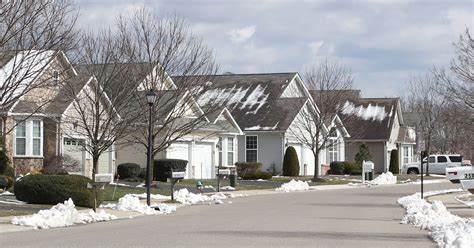He lives where most Americans live—in suburbia.
他住在郊區,大多數美國人也住在那。
His house sits on a plot that is 50 feet wide and 100 feet deep.
他的房子坐落在一塊50英尺寬100英尺深的土地上。
In front is a pavement, four feet wide, then a strip of green containing a tree, seven feet, then a road, 40 feet.
前面是一條四英尺寬的人行道,然后是一條綠帶,里面有一棵七英尺的樹,然后是一條40英尺的路。
His neighbours’ houses look much the same.
他鄰居的房子看起來大同小異。
At six per acre, homes are close enough for arguments to be overheard, but only if you pay attention.
每畝地有6戶人家,他們離得很近,近到能聽見爭吵聲,但前提是你要注意。
They are close enough for comfort.
他們離得很近,很舒服。

The suburb is Lakewood, south of Los Angeles.
郊區是洛杉磯南部的萊克伍德。
It was built during and after the second world war and was at first occupied mostly by white manual workers.
它建于第二次世界大戰期間和戰后,最初主要由白人體力勞動者占據。
Although the developers were Jewish, Jews were initially barred from living there, as were blacks.
雖然開發商是猶太人,但猶太人和黑人最初被禁止在那里居住。
Among the early settlers were the parents of D.J. Waldie.
在早期的定居者中有沃爾迪的父母。
He became a city official, and in 1996 published “Holy Land”, a short, delightful book about the place.
他成為了一名市政府官員,并于1996年出版了一本關于這個地方的簡短而有趣的書《圣地》。
It is a reminder that many people are happy to lead constrained lives, even if they are free to move.
這提醒我們,許多人樂于過著受約束的生活,即使他們可以自由行動。
Earlier defences of America’s suburbs, such as Herbert Gans’s “The Levittowners”, argued that they were more diverse and sociable than their critics alleged.
如赫伯特·甘斯的《列維敦人》中包含早期對美國郊區的辯護,書中認為他們比批評者所說的更加多樣化和社交化。
MrWaldie does not quite agree.
沃爾迪先生不太同意。
His childhood, with its packed swimming pools and freewheeling Monopoly games, was sociable. Adulthood is less so.
他的童年在擁擠的游泳池和隨心所欲的壟斷游戲中度過,是社交的。成年后卻很少這樣了。
Few people walk the streets; each house is an island, visited occasionally by friends and family, who come and go in cars.
很少有人走在街上;每家每戶都是一個島,偶爾有朋友和家人來拜訪,他們開車來來去去。
“The critics of suburbs say that you and I live narrow lives,” he writes. “I agree.”
他寫道:“郊區的批評者說,你和我過著狹隘的生活。”。“我同意。”
譯文由可可原創,僅供學習交流使用,未經許可請勿轉載。











